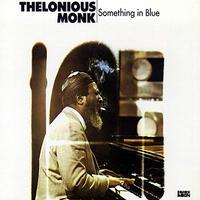He always had a mysterious quality music. His use of unique rhythms helped him build the structures of his compositions. - Scott Safadi
Monk Plays For You!
Fifty four year old Thelonious Monk was considered “washed up” by many when this European session was recorded in 1971. He’d ended his association with Columbia Records and while he made some good records for the most commerical label with which he’d be associated, he’d not written much new material during that period.
Fifty four year old Thelonious Monk was considered “washed up” by many when this European session was recorded in 1971. He’d ended his association with Columbia Records and while he made some good records for the most commerical label with which he’d be associated, he’d not written much new material during that period.
The greatness of his long recording career for Blue Note, Prestige and of course his productive years at Riverside continue to delight new generations of jazz fans. Those recordings and of course Monk himself will never go out of style. By 1971 Monk didn’t have a recording contract and made few live appearances. These sessions recorded for the U.K. based Black Lion label and originally issued in America on awfully pressed vinyl by Audio Fidelity were his final as a group leader, though calling him that here is probably a stretch.
Though Monk wasn’t active during this period because, some say, he was mentally ill, he participated in a worldwide tour featuring many other jazz luminaries including Sonny Stitt, Dizzy Gillespie, Al McKibbon and Art Blakey, the latter two of whom accompany Monk here.
Far from sounding “washed up,” Monk went into the studio the night after the final concert of the eight week “Giants of Jazz Tour” and created this superbly recorded album for Alan Bates’s Black Lion label. Yes, that Alan Bates: the British film actor who starred in so many memorable movies including "Zorba the Greek" where he played the eligible bachelor to Anthony Quinn’s unforgettable Zorba.
Engineer Jonathan Timperley gives Monk center stage and stage-left too, putting Monk’s left hand in the center and his right hand stage-left where he also scrunches Blakey’s drums. This set was all about Monk and no doubt McKibbon and Blakey were happy to play second rhythm section to Monk. Monk performs his classics along with a typically off-kilter cover of George and Ira Gershwin’s “Nice Work If You Can Get It.”
The set begins with a pure stride version of “Blue Sphere,” then a spirited “Hackensack,” followed by the cover and then a devilish “Criss-Cross” to end the side. There’s nothing weak, indecisive or “washed up” about Monk’s playing here. He sounds strong, in great humor and thoroughly engaged.
Side two tracks four Monk faves: “Something In Blue,” “Evidence,” “Jackie-ing,” and “Nutty,” with Monk giving all of them a “roots” reading: relatively slow, deliberate and well-enunciated. The solo reading of “Something In Blue” is alone worth the album’s cost. The piano sound is absolutely superb harmonically, texturally and especially dynamically. It’s big, intimate and close with the hand separation giving you unusually clear access to Monk’s musical thinking.
London’s Chappell Studio rolled in a nice piano for Monk to play. Obviously, this album is not an essential title in Monk’s long recording career but it’s one fans will really dig having and for those unfamiliar, a really great sounding, intimate introduction. Plus it’s his last studio recording and among his best sounding ones.
- Log in or register to post comments




